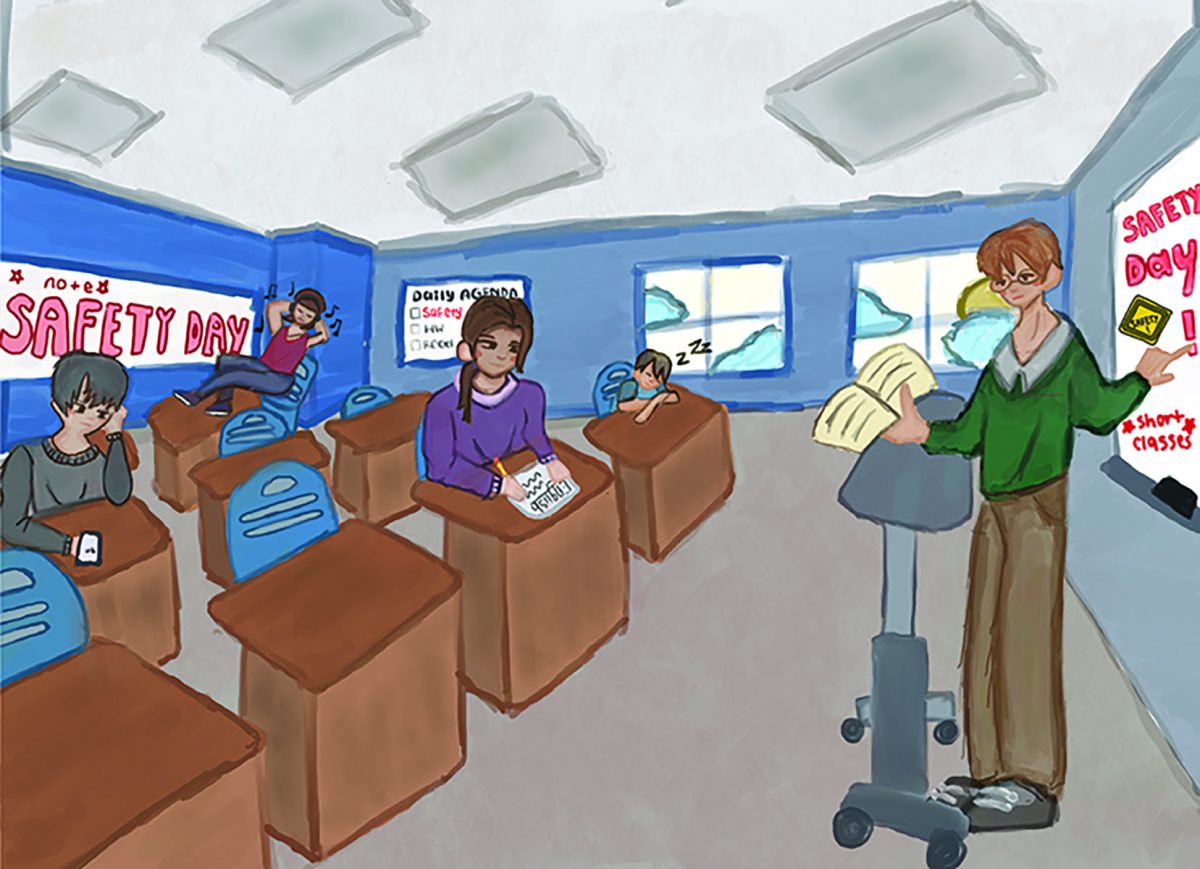Looking around my Block 1 class, I noticed my table partner was missing. As I settled in, I realized many others were absent on Safety Day.
In previous years, drills and safety conversations have been spread throughout the beginning of the year, but Safety Day was different. It had all eight blocks in one day for a shortened amount of time with extra time for safety drills in Block 1, and Block 3 was extended to include an assembly. Brief safety conversations occurred throughout the day in each block.
Because of the shortened blocks, some students saw Safety Day as an opportunity to skip school, thinking they wouldn’t be missing actual classwork. This altogether defeated the purpose of a day set aside exclusively to prepare for emergencies. Since some students weren’t at school to participate in the drills or learn the safety plan for each of their blocks, they likely wouldn’t know what to do in an actual emergency situation.
Safety Day was ineffective even for students who attended school. The lack of students during the fire and weather drills made them less crowded than a real emergency would likely be. The lockdown drill wasn’t even practiced, it was just explained to students. This made it so that students weren’t prepared for what a real emergency would be like. Listening to some teachers read similar prewritten guidelines and going over the safety plans every block became tedious and unproductive. Yes, it’s important to know what to do in an emergency situation in every classroom, but students must be engaged in safety discussions for them to be helpful. By the third time I sat through these conversations, I had an idea of what the teacher was going to say next, and so did many of my peers. These repeated discussions were boring and led some students to tune out entirely.
Rather than having Safety Day, it would be better to have two consecutive drill days within the first month of school. This would ensure that all blocks on both Green and Gold days are prepared for emergencies, while the split over two days would make the information feel less crammed. On the first day, an hour could be spent practicing the lockdown and weather drills, and the next day there could be an hour for an assembly and the fire drill. In the same week as the drill days, but not on the same days, teachers should take the time to have a quick, but genuine, conversation with their students about what to do in the event of an emergency.
Giving safety information over multiple days would better prepare students in all of their blocks. The shorter amount of time spent on these conversations would deter students from skipping class and keep them engaged during these important conversations.
Emergency situations, specifically in schools, are a real and serious issue, and students and staff members must be properly prepared. While Safety Day was designed in everyone’s best interest, changes to the way safety information is presented must be made to more effectively prepare our school.


